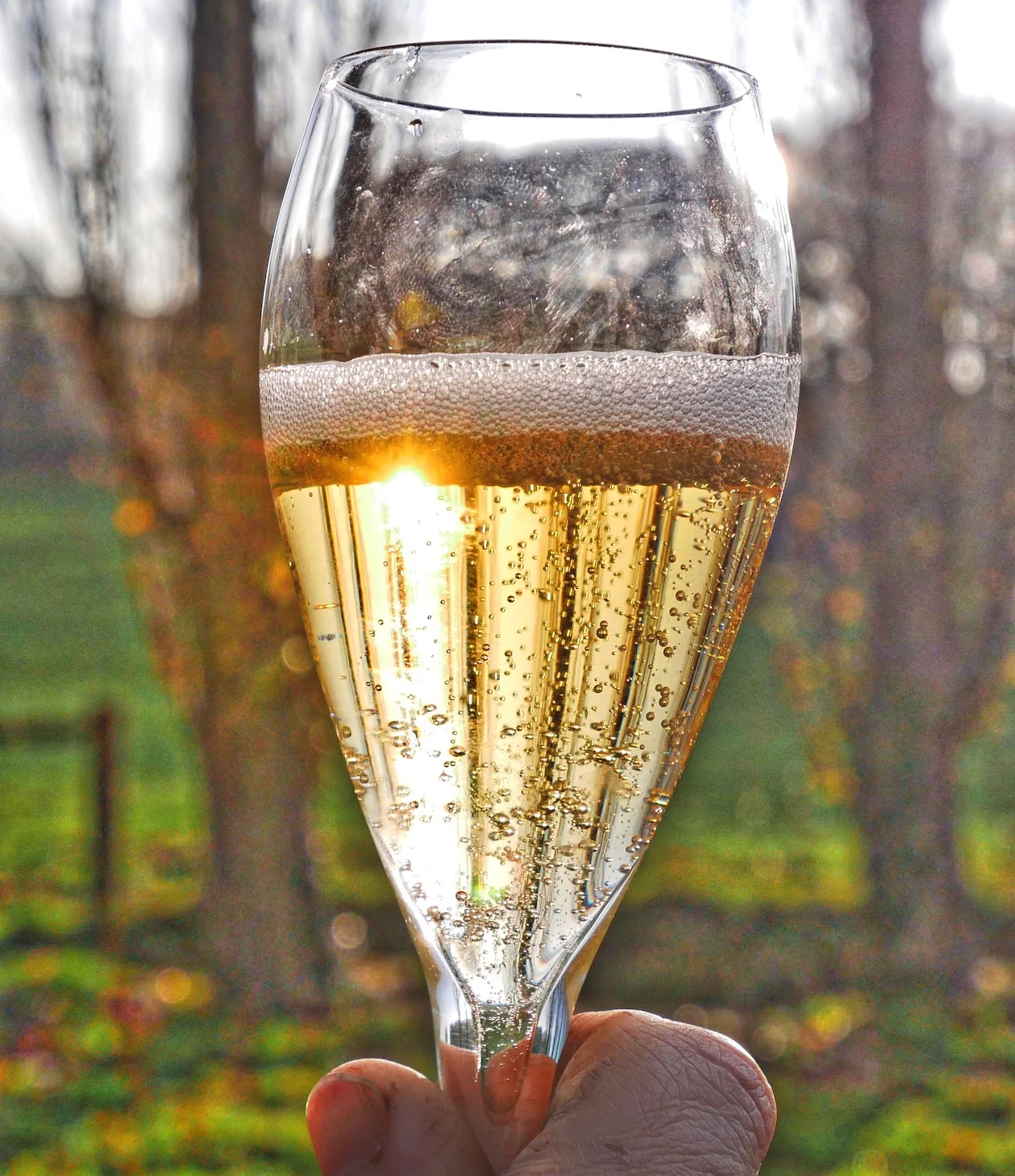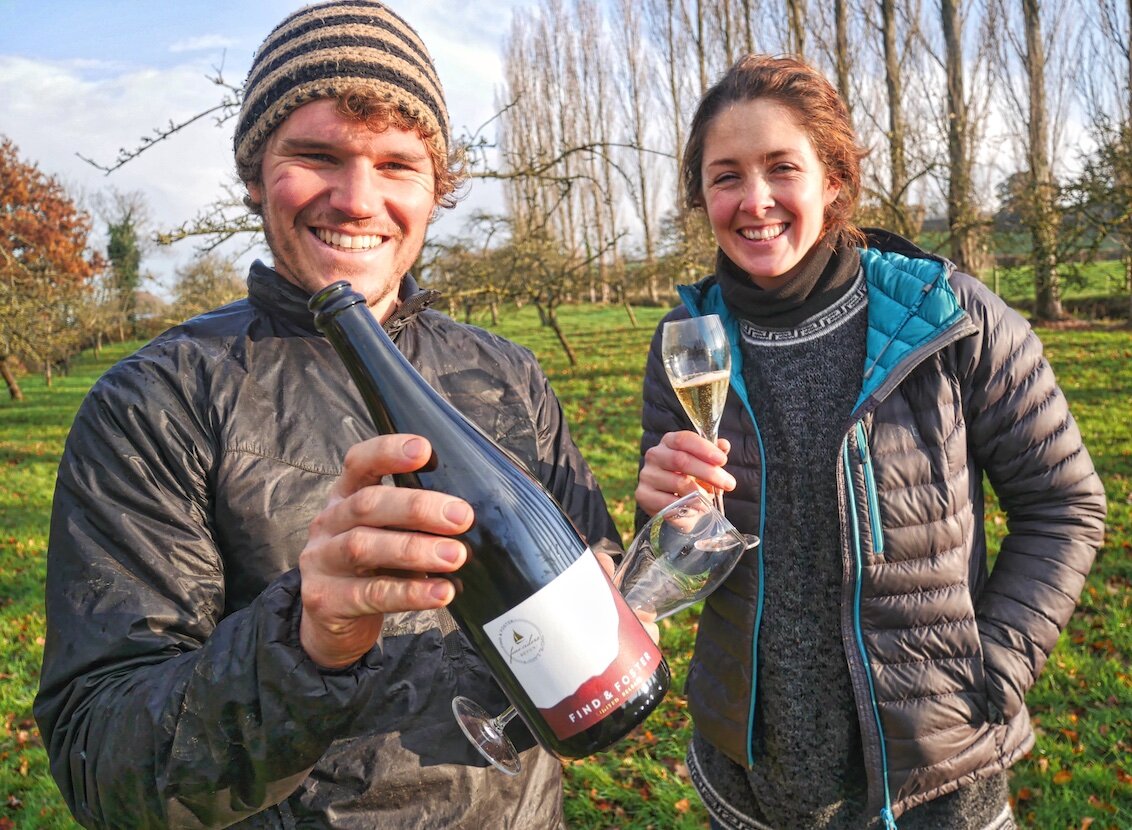Perfect Bubbles for Christmas - New Wave of Bottle-Fermented Ciders
Nothing can be more magical than letting a genie out of a bottle. It’s an odd phrase that does of course have a flip-side - you can never get the genie to go back into the bottle - but even taking that into consideration, the idea of a bottled genie seems to wholly suit what is arguably the most exciting revolution going on in the world of UK food and drink today…
I refer to the new bottle-fermented ciders which are beginning to appear here and there across the rural map.
The genie analogy is fitting because something truly magical does happen when you use certain clever, centuries-old, techniques to turn apple juice into an alcoholic drink inside a bottle.
Do it right and what you get is a product that is similar to good champagne. The liquid will be clear and sparkling and astonishingly refreshing. The bubbles hitting your tongue will be small and smooth, without any of the harshness you get with a drink that has been artificially carbonated.
And the flavour… Well, once again, if the process has been completed in just the right way the complexities of flavour you’ll experience from a bottle fermented cider will leave you delighted and fascinated in exactly the same way as they would if you’d sipped a Grande Marque champagne costing £400 a bottle.
Alex Hill, Bollhayes Cider
If you think that is an exaggeration then I can report that deep in the Blackdown Hills this week I sampled a food and drink pairing which was the probably the finest marriage of solid and liquid ever to pass my lips.
Alex Hill, one of the UK’s leading experts on bottle-fermented cider, had poured a glass of his Bollhayes 2003 and also cut a slice of the best Iberico ham money can buy. It was as if someone had taken the classic combo of Sunday roast pork and apple sauce, and distilled them down to create two little phials containing essences of the real thing that were somehow 500 times more concentred and alive and exciting. The needle on the patent wowometer, which sits deep within the pleasure cortex of my brain, went straight into the red.
It was the kind of fabulous combination that I could imagine a multi-millionaire paying ludicrous amounts of money for in a top Michelin restaurant. This was epicurean pleasure raised to its very highest setting.
All I can do is quote from Alex’s tasting notes which describe the 2003 Bollhayes thus: “Deep amber with fine bubbles. Aroma: Complex, deep, rich, with a hint of smoky vanilla, plum and burnt sugar. Flavour: Richly bitter, with notes of juniper and burnt sugar.”
Two mentions of sugar there, but one of the magical things about this particular kind of genie in a bottle is that there is either no added sugar, or just a tiny amount. And no other kind of artificial ingredient, I have to add, save in this case maybe a smidgen of champagne yeast. What you are getting with a bottle-fermented cider is apple juice that has been left to work a magic of its own.
A magic that elevates it from everyday cider in the same way as a bottle of Krug is placed far above a wine-box of cheap supermarket plonk.
But when I say “work a magic of its own”, bottle-fermented cider does need a helping hand. Indeed, it requires a great deal of attention and care, which is why the proper stuff will never be cheap.
After having lunch with Alex and sampling a couple of his Bollhayes products, cider-expert James Crowden and I drove 20 miles deeper into Devon to meet a young couple whose bottle fermented ciders can cost more than £50 a pop in top Michelin-starred London restaurants. And why not? The champagne equivalent could cost way over ten times that in such establishments.
Polly Hilton and husband Matt run Find and Foster - a small bottle-fermented cider company named after the fact that Polly started out by finding rundown orchards in the rural hinterland north of Exeter and began bringing them back to life.
In a way James and I managed to visit both ends of this new cider revolution in that Alex has been in this particular game for longer than most other cider-makers in the UK (we even sampled a bottle of his truly amazing 1993 vintage) - while Polly and Matt are newcomers who happen to have already gained an impressive track record.
For many years Alex owned and ran a Devon-based business called Vigo which sells and designs the kind of equipment needed by cider-makers - but long before his retirement he was drawn to the idea of a bottle-fermented version of the drink.
And, as I keep saying, it’s one that works by a kind of alchemy. A two-sided alchemy, as far as I can make out.. Bottle-fermenting is a complex process. Basically you can go down one of two routes… The methode-champenoise system - as followed by Alex - or you can use an ancient process known as “keeving” - which is often, but not always, practised by Polly and Matt.
As we walked into Alex’s cider-shed we heard the familiar bubbling sound familiar amateur wine-makers who have air-locks on their demijohns…
“The music of fermentation,” is what Alex called the sound as we gazed at the big steel vats full of rapidly fermenting apple juice.
“Once it’s finished fermenting you don’t want air-contact because nearly all the spoilage organisms which can ruin cider rely on oxygen,” Alex explained. “If you can eliminate oxygen the cider has a better chance of tasting good. Traditional cider tasted pretty rough sometimes because people didn’t follow that simple rule.
“This is fermenting with wild yeasts,” he continued. “This is just pure apple juice with nothing added - the yeast is in the apples, in the air, in the cider-press boards - and it’s built up here over 30 years of cider-making. So I’ve probably got my own strains of yeast now.
“I still do draught cider, but my speciality is bottled cider made by the champagne method. There are more people making it now - but it is very important to distinguish this from artificially carbonated cider. This has gas in it from fermentation inside a sealed bottle - and it’s quite a complex process involved after that in getting rid of the yeast without getting rid of the gas.
“We use the methode-champenoise and it requires and element of skill and some very expensive equipment,” he said before we went into the farmhouse to sample bottles that were three, 15 and 25 years old.”
Keeving, on the other hand, is a natural process which involves the formation of a layer of pectin that will, given the right conditions, float to the top of the pressed apple juice. This layer - which looks a bit like a huge digestive biscuit that’s been dunked in liquid - traps nitrogen and nutrients and is eventually removed. Without the essential nutrients, any fermentation of wild yeast will slow down or stop, leaving natural sugars from the apples themselves to sweeten the remaining liquid.
The keeved cider is then bottled, but it will carry on very slowly fermenting in its sealed home beneath the cork - which is why producers use the special toughened champagne style bottles that won’t explode. This secondary fermentation allows the liquid to develop its own natural sparkle.
Polly told me she’d first set up the business in a bid to help save old run-down orchards after discovering that 90 percent of Devon’s traditional orchards had been lost since World War Two. “The apples in these orchards are incredible - they are local varieties, the trees are really old. There are no sprays or chemicals anywhere.
“So it would have been a shame to make really standard cider - and obviously I couldn’t compete on how much I could make. So I wanted to do something unique by using the champagne and the keeving method - because some of these orchards were planted for keeving.
“We use very late ripening cider varieties and you macerate the fruit and a reaction happens between the calcium in the apples and the pectin in the skin,” said Polly, referring to the cap which rises to the top of the cider. “The fermentation stops before all the sugar has turned to alcohol, so you can create a naturally sweet, naturally sparkling, cider by bottling that low nutrient cider towards the end of the fermentation.”
The Fine Cider Company in London now sells the couple’s products to top end restaurants - but you can buy it at local outlets like Dart’s Farm at Topsham - or, as is the case with both our interviewees today, from their websites. I’d definitely recommend getting some in this Christmas as a treat for your guests.
That is, as I say, a very brief overview of the bottle-fermented cider making process. If you’d like to hear more about the subject, have a listen to my latest Adventures in Rural Journalism podcast which is all about bottle-fermented ciders.
To buy bottle fermented ciders check out https://bollhayescider.co.uk/
Or http://www.findandfosterfineciders.com/








